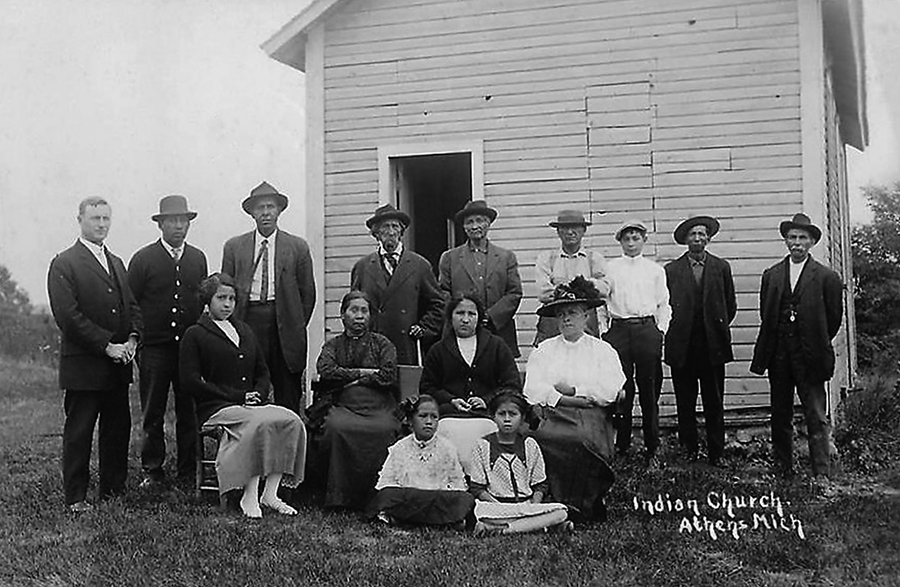
by mmccarty | October 14, 2021
The Indian Reorganization Act (“IRA,” “Wheeler-Howard Act”), signed June 18th, 1934, was intended to encourage tribes to assume more control of their governance and help change the aforementioned “fundamental impracticabilities of law,” which was resulting in so many problems in Indian Country.
The press signaled this act as an “Indian New Deal” program; it provided tribal participants assurances that their land would be held forever in Federal trust and that eligible tribes could develop their economies. Albert Mackety, Levi Pamp, and another NHBP member, Austin Mandoka, who was Chairman of the Athens Indian Committee, learned of the IRA and believed the legislation could benefit the community.

by mmccarty | October 14, 2021
The relative prosperity of the settlement in the later nineteenth century fell prey to the general agricultural decline of the post-World-War-I era and was intensified by the Great Depression.

by mmccarty | October 14, 2021
The strong influential role of Samuel Mandoka within the Pine Creek settlement began during the lifetime of Steven Pamptopee. At Steven’s death in 1926, Samuel was not formally designated to the “office” as chief but was essentially appointed by consensus of the residents of the Pine Creek Reservation because of his good education and outgoing personality.

by mmccarty | October 14, 2021
Phineas Pamptopee, who had been chief for 50 years, died in 1914. The selected chief for the next ten years was his youngest son, Stephen Pamptopee.

by mmccarty | October 14, 2021
During the years between 1904 and World War I, many of the families who had bought land in the East Indiantown area sold the property. The settlement again became primarily focused on the original Pine Creek 120 acres and a new town, about two miles from the old settlement.




